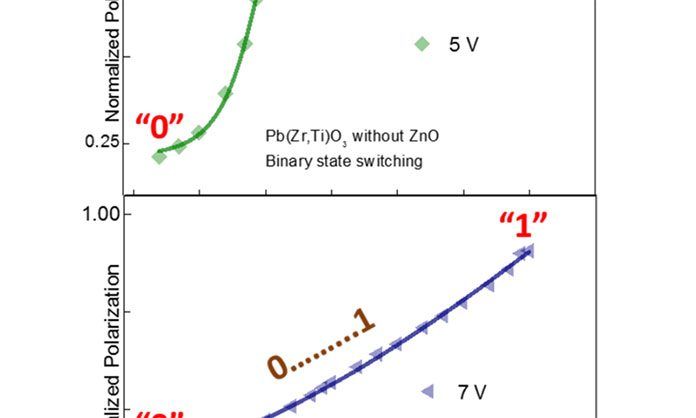We know Human Brain is the fastest organ in the body. It is the hub of our nervous system. It contains billions of nerve cells arranged in patterns that coordinate thought, emotion, behavior, movement, and sensation. Our brain consists of 1000 of neurons. It is not like a computer system that works in the form of binary digits.
Scientists from the MESA+ Institute for Nanotechnology of the University of Twente (The Netherlands) have developed a Ferroelectric material. This new material has memory function looking like synapses and neurons in the brain. It emerges with multistate memory. Lead-zirconium-titanate (PZT) is a key equipment for this brain-inspired computing.
Lead zirconate titanate is also known as PZT. It is an intermetallic inorganic compound. It is a ceramic perovskite material that shows a marked piezoelectric effect, meaning that the compound is used in a number of practical applications in the area of electro ceramics. PZT is a white solid that is insoluble in all solvents.
Some interesting properties of this brain-inspired memory material:
- It is Ferro-electric: It can change it to a stable state after electrical field is passed.
- It generates non-volatile fast memory function.
- Combined with computer chips, so that it can perform the task much faster.
- Through electric voltage, the material can be expanded, pressing it can also generate a voltage.
While writing times, scientists used a variable in those smaller areas. It can store the outcome of many states anywhere between zero and one. This is like the way synapses and neurons ‘weigh’ signals in our brain. The multistate memories are connected to transistors. They can intensely enhance pattern recognition speed. For instance: our brain performs this kind of tasks by taking only a fraction of the energy a computer system needs. By considering graphs, the writing times seem quite long, but it is possible to create many memories parallelly. The brain functions are already imitated in software like neural networks. But in that case, common digital hardware can become as a limitation. The new material is an electronic hardware with a brain-like memory. Finding solutions for combining PZT with semiconductors, or even developing new kinds of semiconductors for this, is one of the next steps.
While doing the research scientists also found some new characteristics of PZT like physically changes shape when an external electric field is applied and extremely large dielectric constant at the morphotropic phase boundary.
